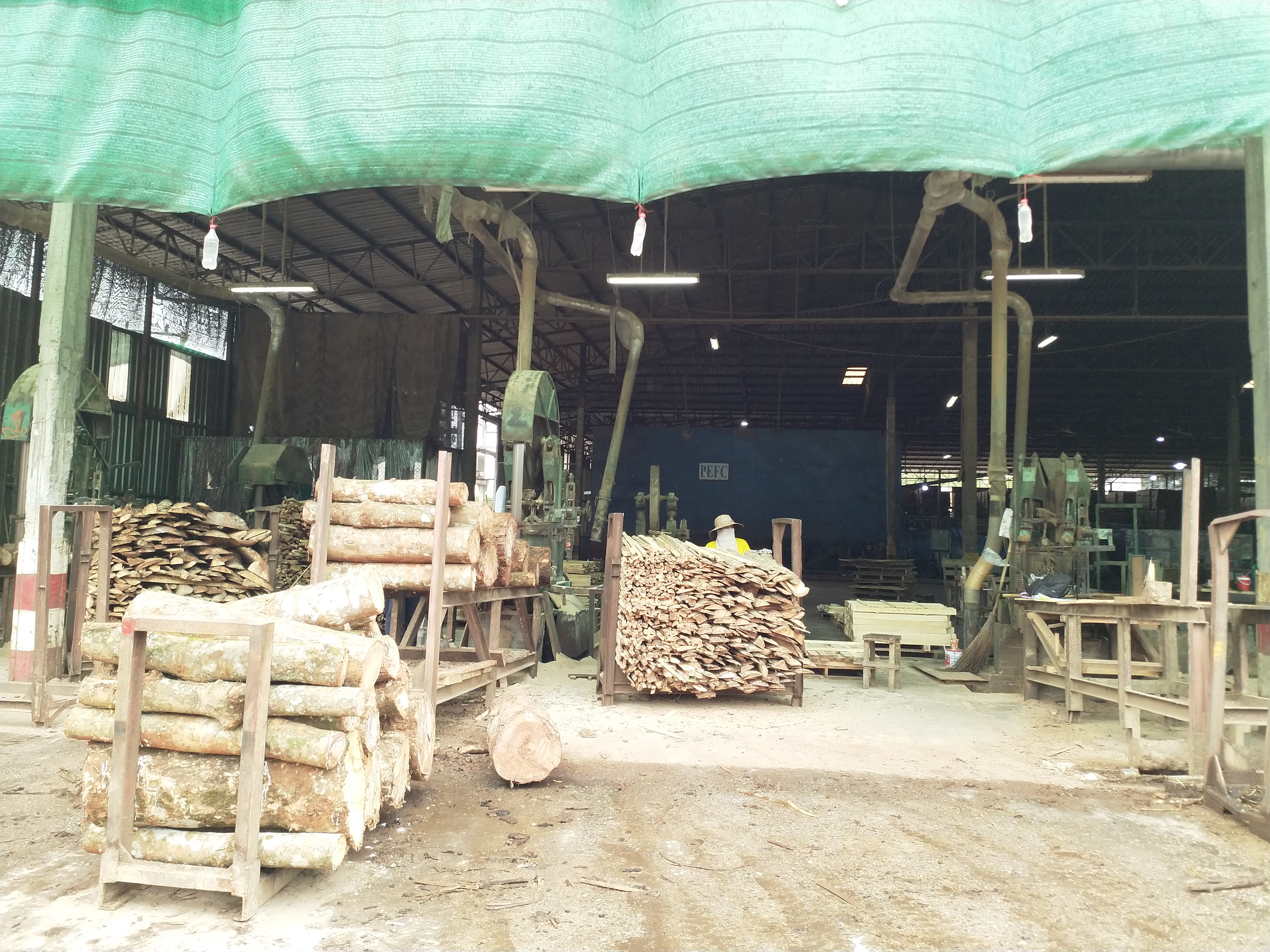Meeting our certified companies - Suntrade Parawood
PEFC certification is helping to improve the safety of their workplace and dealing with trade and business challenges.
Meeting our certified companies - Suntrade Parawood
14 September 2022 Meeting certified companies
In the latest article in our interview series ‘Meeting Our Certified Companies’, we spoke to Choong Seang Lim and Tong Lim of rubberwood supplier Suntrade Parawood, who told us how PEFC certification had helped to improve the safety of their workplace and enabled them to deal with trade and business challenges.

Proudly owned and operated by smallholders, Suntrade Parawood processes and treats sawn timber from rubber tree plantations and now supplies PEFC-certified rubberwood after gaining chain of custody certification in February. Suntrade have recognised the uniquely sustainable nature of rubberwood in addition to the surging global demand for this tropical hardwood, and are producing a product that meets the needs of the European market.
We had the pleasure of speaking to Mr. Choong Seang Lim, General Manager of Suntrade Parawood, and Mr. Tong Lim, who told us how PEFC certification had not only unlocked market access for their products and helped them to comply with strict legal requirements on its exportation, but had also led to an improvement in the safety of their workplace and the streamlining of administrative duties.
You mentioned that PEFC certification has improved the safety of your workplace. Can you tell us about that?

Safety standards at work are easier to apply and execute, as workers have seen safety policies as a must to pass the audit requirements of PEFC. As a part of this process, Suntrade has provided a series of safety training sessions for their workers, organised by an independent third-party company. 11 workers in the factory have now obtained certificates in safety training, and we’ve noticed that this has led to an improvement in the awareness of safe practices in the workplace.
Workers are more willing to wear PPE (Personal Protective Equipment), such as masks, safety glasses, steel-capped boots, and gloves after the training. Safety for our workers is very important in our working environment, and wearing PPE helps to minimize exposure to preventable injuries and hazards such as dust. We have put into place systems for the proper storage and maintenance of PPE equipment.
After applying the safety policies, we have also discovered that there were fewer occurrences of severe safety incidents at the factory.
How else has PEFC certification helped Suntrade Parawood?
Documentation is much easier for everyone because we have a documentation system according to the PEFC Chain of Custody standard requirements. Everything is in place and easy to find by using document records with a specific document number.
How does the future for Suntrade Parawood look now that they are PEFC certified?
Medium size companies like ours have more risk on legality, especially with regards to export requirements. PEFC chain of custody certification helps with this issue so is very valuable.

We hope that certification can help us open new markets in Europe and other places. Diversifying our market opportunities means we depend less on the constraints of a single market, as the demand for rubberwood is currently greater than the supply. We want to work with more companies that value Sustainable Development Goals (SDG) to become more ESG compliant.
What is Rubberwood?
Rubberwood, or Parawood (Hevea Brasiliensis) as it’s alternatively known, is a unique sustainable resource. It’s harvested from the rubber tree at the end of its latex-producing cycle, and historically it was either burnt or simply discarded.
Today, it’s valued by woodworkers, flooring, and furniture makers within Southeast Asia for its low-cost, workability and sustainability, and as a result, rubberwood has become the most widely traded tropical hardwood in the world.
The beauty of the rubber tree is that it has the capacity to produce latex for 25-30 years and store carbon, and then once the tree has served a primary function, the timber may be used in many different products, such as wooden furniture or wooden panels used in the construction of buildings.
The use of renewable rubberwood - instead of other vulnerable tropical hardwoods - can potentially relieve pressure on natural forests and contribute to a reduction in fossil fuel emissions.
‘PEFC is Here’ Sustainable Rubber Campaign
‘PEFC is Here’ is PEFC's awareness campaign to promote the use of sustainably sourced rubber and rubberwood. As part of the campaign, we highlight companies and brands that prioritize environmental conservation by offering PEFC-certified rubber and rubberwood through case stories and graphics. If you source and sell PEFC-certified rubber and rubberwood products, join us today!